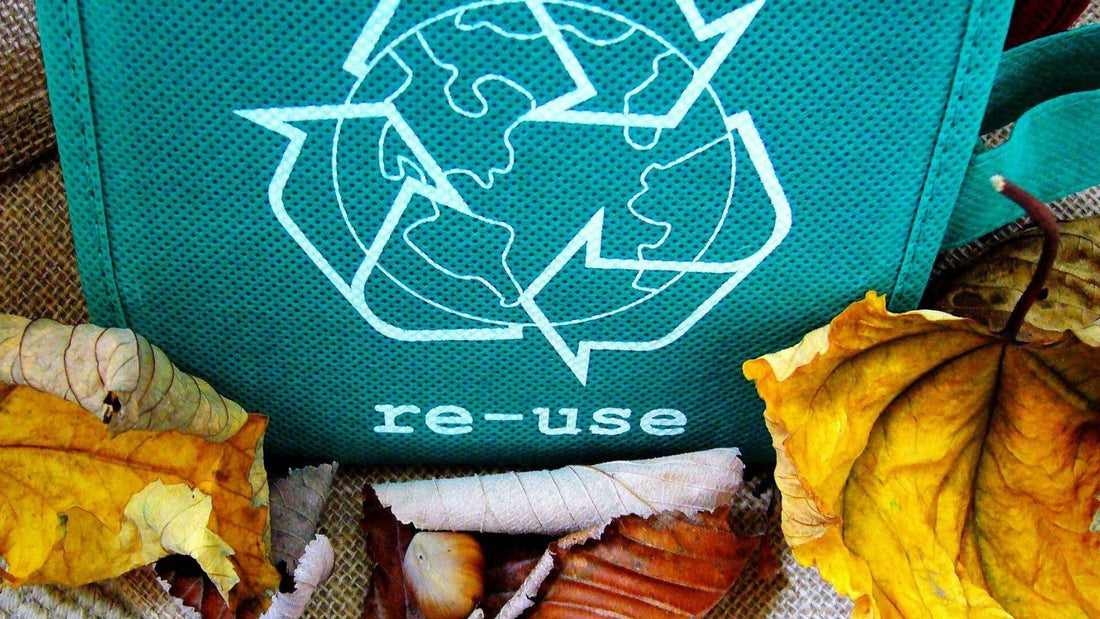
Reduce Your Business' Carbon Footprint Through Recyclable Packaging
Share
Carbon footprint refers to the production of greenhouse gases due to human activities. Some of the most common and harmful gases include methane, perfluorocarbons (PFC), and carbon dioxide. In the last decade, the increase in greenhouse gases in the atmosphere has become a big worldwide concern. Scientific studies strongly point to greenhouse gas emissions as a major contributor to global warming. Global warming causes drastic weather pattern changes, forest fires, sea-level rise, destruction of natural systems, and other natural disasters.
One area of concern is the manufacturing industry, which has processes that produce a high amount of greenhouses gases, especially CO2. Thus, the business sector has to acknowledge its vital role in reducing carbon footprint and protecting the environment.
The Role of Packaging in Reducing Carbon Footprint
The processes involved in packaging products impact the rise of a company's carbon footprint. The reality is manufacturing certain package products can result in a higher amount of Co2 emission compared to others. Businesses can measure their carbon footprint produced by packaging in different stages like the manufacturing process, transport, and shelf life of products.
Using recyclable packaging is one of the effective ways to reduce carbon footprint. Compared to making packaging materials from scratch, recycled materials require less energy. Less energy requirement leads to less pollution and carbon emission.
How exactly do recyclable materials reduce carbon footprint? Here are the ways:
- Recyclable materials are either biodegradable, refillable, or returnable. They do not add to the increasing landfill waste. If businesses offer containers, which customers can use refill, reuse, or return, they can also decrease the demand to manufacture brand new packaging. The rule of thumb is that the less manufacturing you do, the less carbon footprint you emit.
- Recyclable materials decrease carbon emissions compared to brand new plastic packages. The first stage of producing plastic involves fossil fuel extraction. This extraction releases greenhouse gases. In addition, the further release of greenhouse gases occurs during the manufacturing and refining of plastic. Plastic waste management, especially incineration, also emits greenhouse gases. According to the Friends of the Earth organization, plastic manufacturing is responsible for 5% of greenhouse emissions. The study made by CIEL (Center for International Environmental Law) projects that by 2050, the worldwide plastic lifecycle will release greenhouse emissions that could reach more than 56 gigatons. In comparison, materials made from paper and cardboard can have a neutral carbon footprint. Other plastic or styrofoam alternatives for packaging, like compostable foams and plant-based wraps, produce less carbon emission. If you decide to use materials like plastic or aluminum, make sure they are recycled and not made from scratch. According to the British Department for Environment, Food, and Rural Affairs, you need 95% less energy to produce recycled aluminum drink cans than to make them from virgin ore. Using recovered plastics reduces the production of virgin polymers.
- Recyclable materials use mono-print color, which reduces the use of chemicals, often needed for elaborate and more colorful label printing.
Concerns About Recyclable Packaging
You may decide to outsource your packaging needs to a third party. But this does not mean that you cannot control your carbon footprint. You still have the power to choose providers or business partners, who are committed to sustainability and environmental protection.
One way of validating the providers' environmental commitment is to look into their certifications. An example of a relevant certification is the ISO 14001:Environmental Management System (EMS). This certificate verifies the provider's commitment to managing the environmental impact of their business processes.
If you decide to use paper or cardboard for packaging, make sure to source the raw materials from suppliers who observe sustainable practices. You can choose to work with suppliers who obtained FSC (Forest Stewardship Council) and PEFC (Programme for the Endorsement of Forest Certification). These types of certification guarantee that the extraction of wood and raw materials complies with sustainability standards. Providers who don't follow environment-friendly methods become contributors to deforestation, which also causes increased greenhouse gas emissions.
Benefits of Choosing Recyclable Packaging
Admittedly, overhauling your packaging processes and arrangements to reduce carbon footprint requires dedication and careful planning. Business owners may perceive this decision to be costly, time-consuming, and stressful. However, the long-term benefits of choosing recyclable packaging will eventually outweigh the initial disadvantages.
An efficient recyclable packaging strategy results to lower production and operational costs. This is because you spend less on producing brand new packages. In addition, You can also reduce the cost of managing packaging waste (waste materials produced during the manufacturing process).
You can build strong brand recognition by taking a more environment-friendly packaging approach. Several governments around the world are already investing in greener solutions and sustainable practices. More and more consumers care about the product packaging of their favorite brands and their environmental impact.
The world is moving towards sustainability. If you prioritize recyclability in your package testing research, you will align your business to the world's desired vision on environment protection.
Regardless of size, businesses must take an active role in reducing their carbon footprint. Using recyclable packaging is just one of the several strategies for reducing carbon footprint, but it is a step that can make a difference!
Read our blog to learn more about minimizing the impact of climate change. æ

We will only handle press inquiries. If you have questions regarding an order please contact our customer care. media@biotuff.com.au
In the spirit of reconciliation, Biotuff Australia acknowledges the Traditional Custodians of the country throughout Australia and their connections to land, sea and community.
We pay our respects to their elders past, present and emerging, and extend that respect to all Aboriginal and Torres Strait Islander peoples today and everyday.
